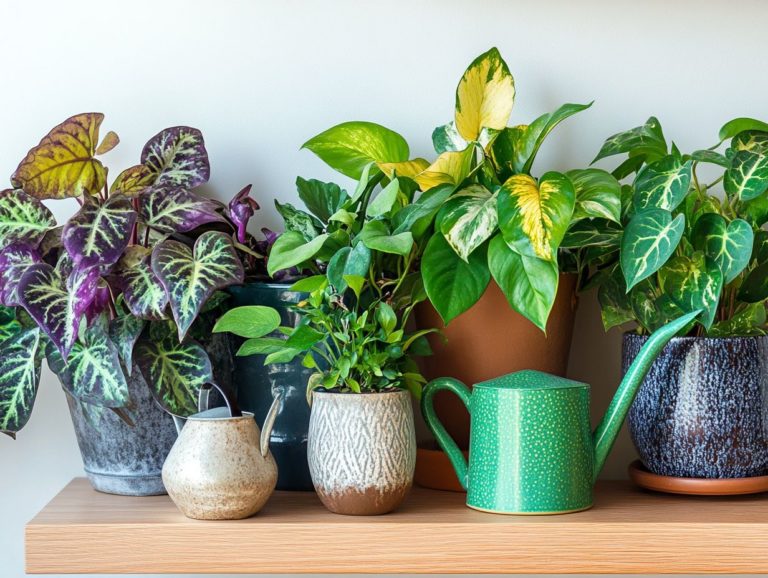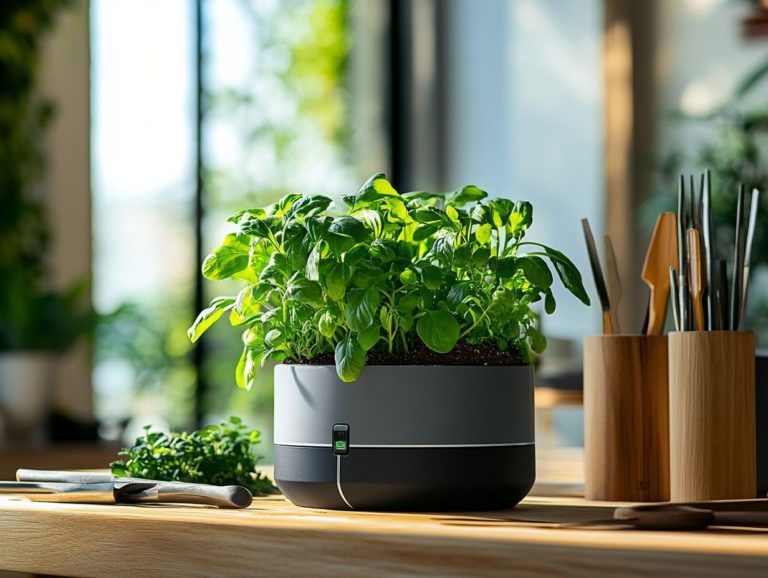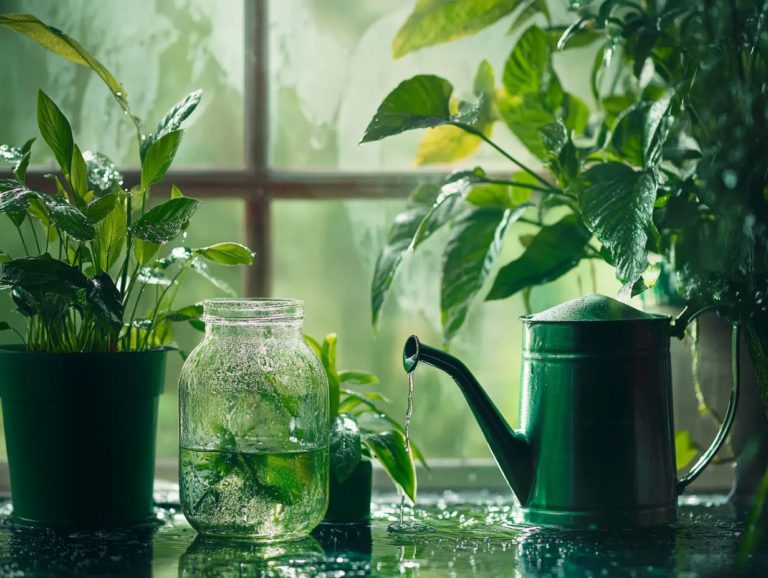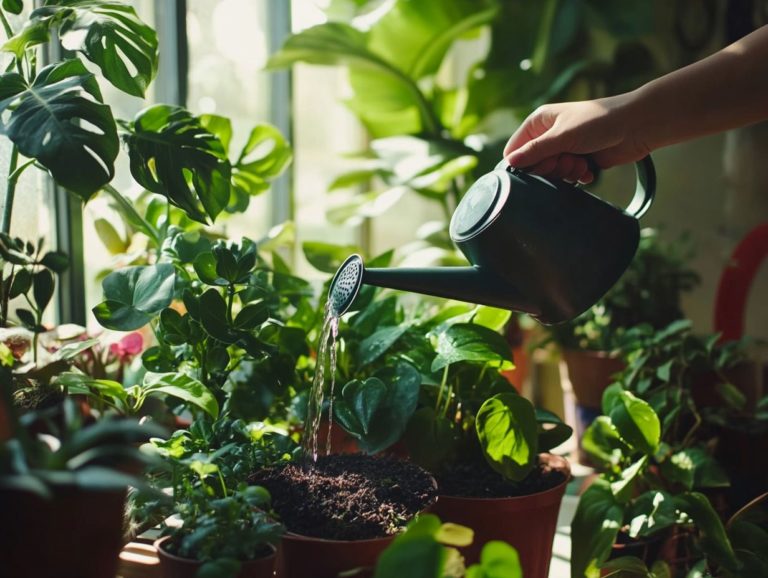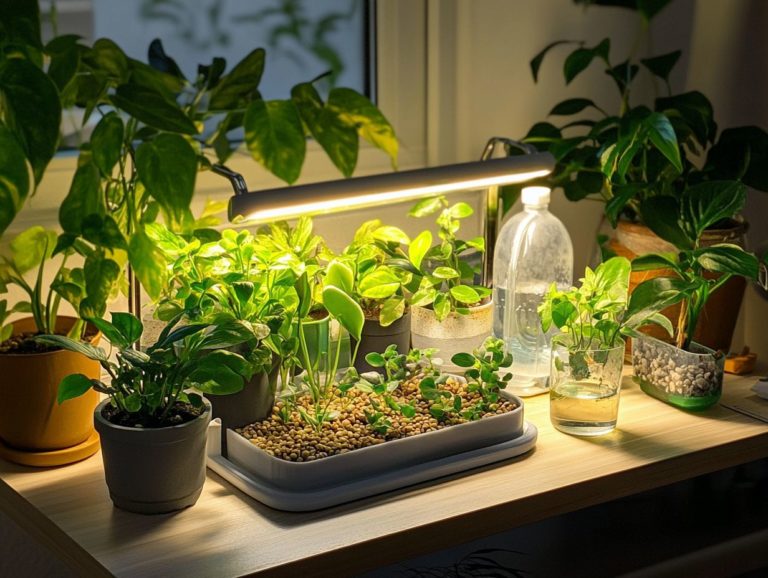Using a Spray Bottle for Watering: Is It Effective?
Watering your plants can often feel like a delicate balancing act. Utilizing a spray bottle presents a sophisticated solution that merges efficiency with precision.
This approach helps you avoid the pitfalls of overwatering. It also ensures that your plants remain content and hydrated. In this guide, you ll discover which types of plants thrive with this technique. You will receive effective tips on using a spray bottle and consider potential drawbacks to keep in mind.
Whether you re a seasoned gardener or just starting your gardening journey, this guide will empower you to elevate your watering routine to new heights.
Contents
Key Takeaways:
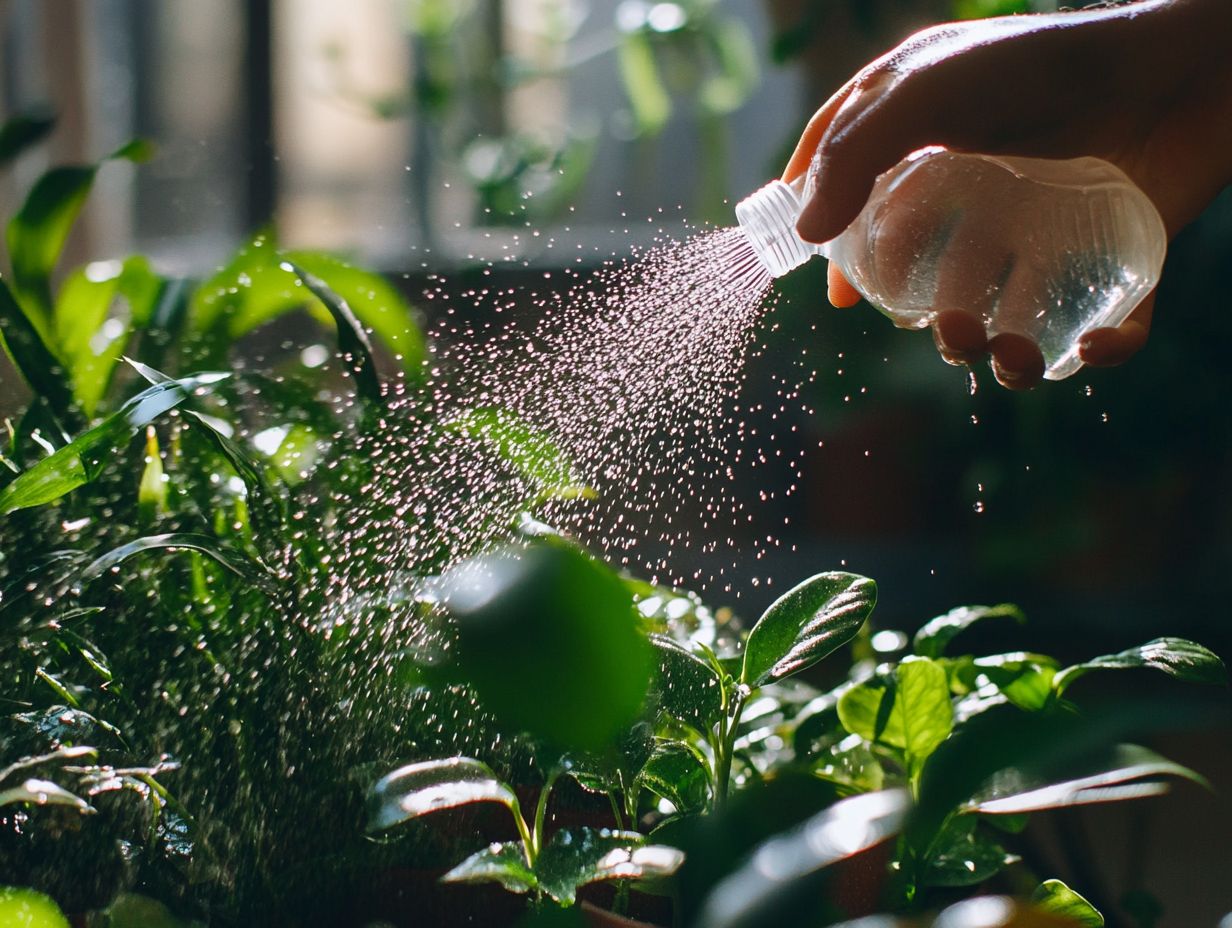
- Spray bottle watering is an efficient and precise method. It allows for better control over the amount of water each plant receives.
- Some plants, such as succulents and air plants, thrive with mist watering from a spray bottle. Others may not benefit as much.
- Proper technique and tips, such as using a fine mist and avoiding wetting the leaves, can ensure effective watering with a spray bottle.
Benefits of Using a Spray Bottle for Watering
Using a spray bottle to water your plants can elevate your gardening experience. This is particularly helpful if you re still finding your footing with the right techniques.
The advantages are numerous. It allows for efficient water delivery, offers precision in targeting specific areas, and minimizes the risk of overwatering. Overwatering can harm both the soil and the roots of your plants.
Choosing a well-designed sprayer guarantees that your plants receive the ideal amount of water. This ultimately fosters their growth and enhances their overall health.
Efficiency and Precision
Efficiency and precision are two key benefits you’ll find when using a sprayer in your gardening endeavors. It allows for targeted watering, optimizing how your plants absorb water.
This approach ensures that each plant receives just the right amount of moisture it needs. It promotes an even distribution of water throughout the garden bed.
When you deliver water evenly, you significantly reduce the risk of pooling or dry spots. Both of these can impede root development and nutrient uptake.
Maintaining a consistent moisture level in the soil is essential. Fluctuating conditions can stress your plants and lead to subpar growth.
Ultimately, employing a sprayer creates a more nurturing environment for your plants. It enhances the overall efficiency of water usage in your garden.
Reduced Risk of Overwatering
One of the key benefits of using a spray bottle for watering is the significantly reduced risk of overwatering. This can negatively impact the soil and roots of your plants.
Overwatering can lead to root rot. This is a condition where the roots are deprived of oxygen and begin to decay, ultimately stunting growth or even causing plant death.
By opting for a spray bottle, you can finely tune the amount of water. This ensures that just the right amount reaches the surface and surrounding soil without causing excessive saturation.
It’s vital to watch for common signs of overwatering, such as:
- Yellowing leaves
- A droopy appearance
- A soft, mushy stem
These symptoms are crucial indicators that adjustments to your watering frequency may be necessary. This allows your plants to thrive while maintaining their optimal health.
Types of Plants Suitable for Spray Bottle Watering
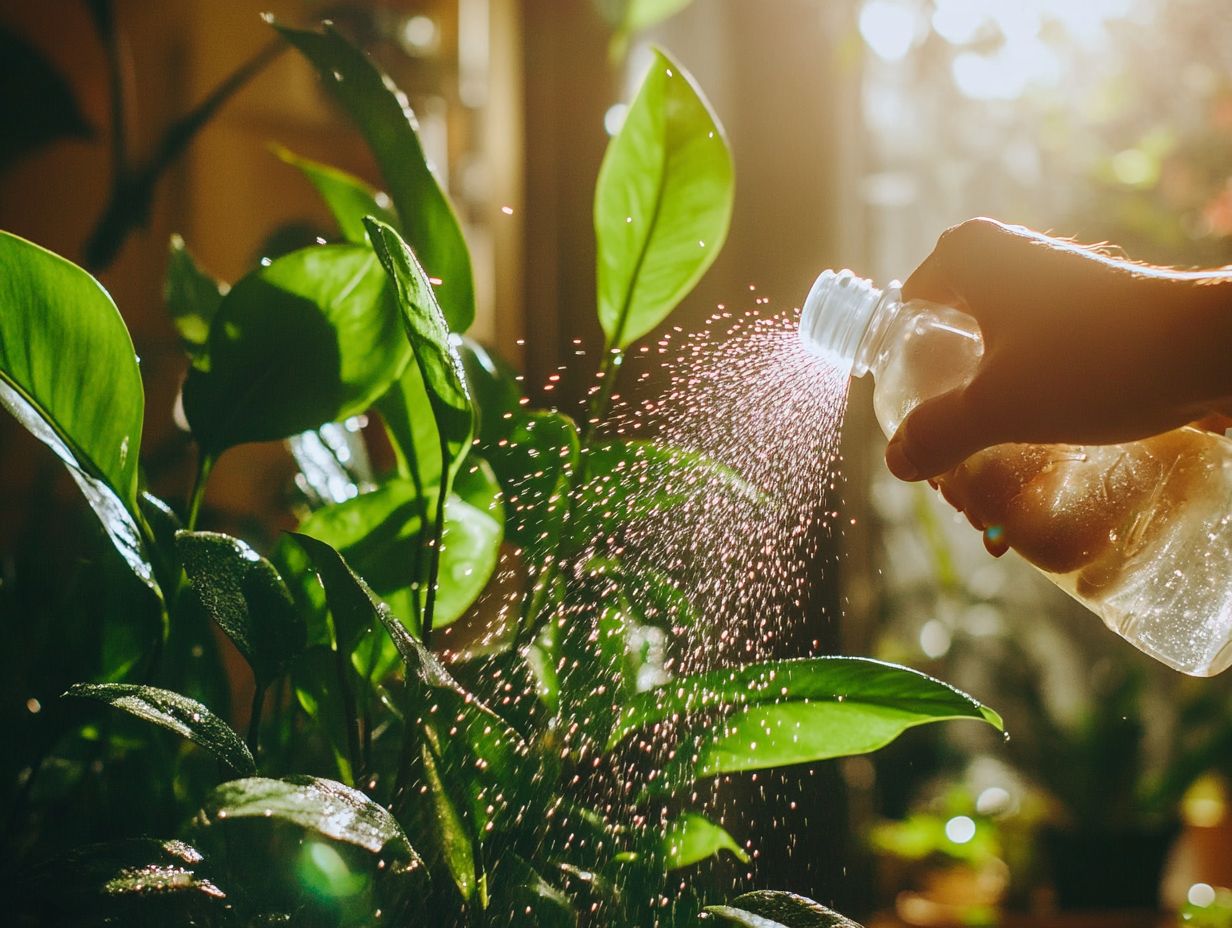
Not every plant thrives under the gentle embrace of a spray bottle. Understanding which varieties flourish with mist watering is crucial for any aspiring gardener.
Some plants, such as mother-in-law’s tongue, relish the delicate mist that a sprayer offers. Others may not respond favorably due to their unique watering requirements or root structures.
By identifying the plants that are well-suited for this technique, you ll discover how to supercharge your watering strategy. This will promote healthier growth in your green companions.
Ready to transform your watering routine? Grab your spray bottle and let s get started!
Plants That Thrive with Mist Watering
Certain plants thrive with mist watering techniques, making them ideally suited for care with a spray bottle. Take the resilient mother-in-law’s tongue, for example.
These botanical treasures, such as ferns, peace lilies, and spider plants, flourish in environments with elevated humidity. They tend to prefer warmer habitats, often found in tropical or subtropical regions. Mist watering mimics their natural environment by delivering moisture directly to the leaves, which helps prevent leaf drop and enhances overall vitality.
Keep humidity levels just right, and watch your plants thrive like never before! You can significantly reduce stress on the plants, allowing them to grow lush and healthy. So, when nurturing your indoor greenery, adopting a misting technique could transform any space into a verdant oasis.
Plants That May Not Benefit from Spray Bottle Watering
While you may find that many plants adapt well to watering with a spray bottle, others might not appreciate this method and could suffer from inadequate water needs.
Take, for example, plants with thick, fleshy roots or tubers, like succulents and certain bulbs. These beauties thrive in dry environments and could easily become over-saturated from regular misting. Their root structures are designed to store water, allowing them to withstand droughts, and too much moisture can lead to root rot, a condition where roots decay due to excessive moisture.
On the other hand, delicate souls like ferns prefer their fine roots to be treated with care. If you mist them too often, they might feel overwhelmed, as poor soil drainage can impede their ability to absorb nutrients and breathe.
By understanding the unique water needs and root characteristics of each plant, you can provide optimal care and ensure their thriving health.
How to Use a Spray Bottle for Watering
Mastering the art of using a spray bottle for watering can significantly enhance your plant growth, particularly if you’re a beginner eager to refine your gardening techniques.
By perfecting your spraying technique and heeding expert advice, you can guarantee that each plant receives the ideal amount of moisture it needs to flourish.
It’s essential to tailor your approach to the unique needs of each plant and the surrounding environmental conditions, ensuring you reap the full benefits of this effective watering method.
Proper Technique and Tips
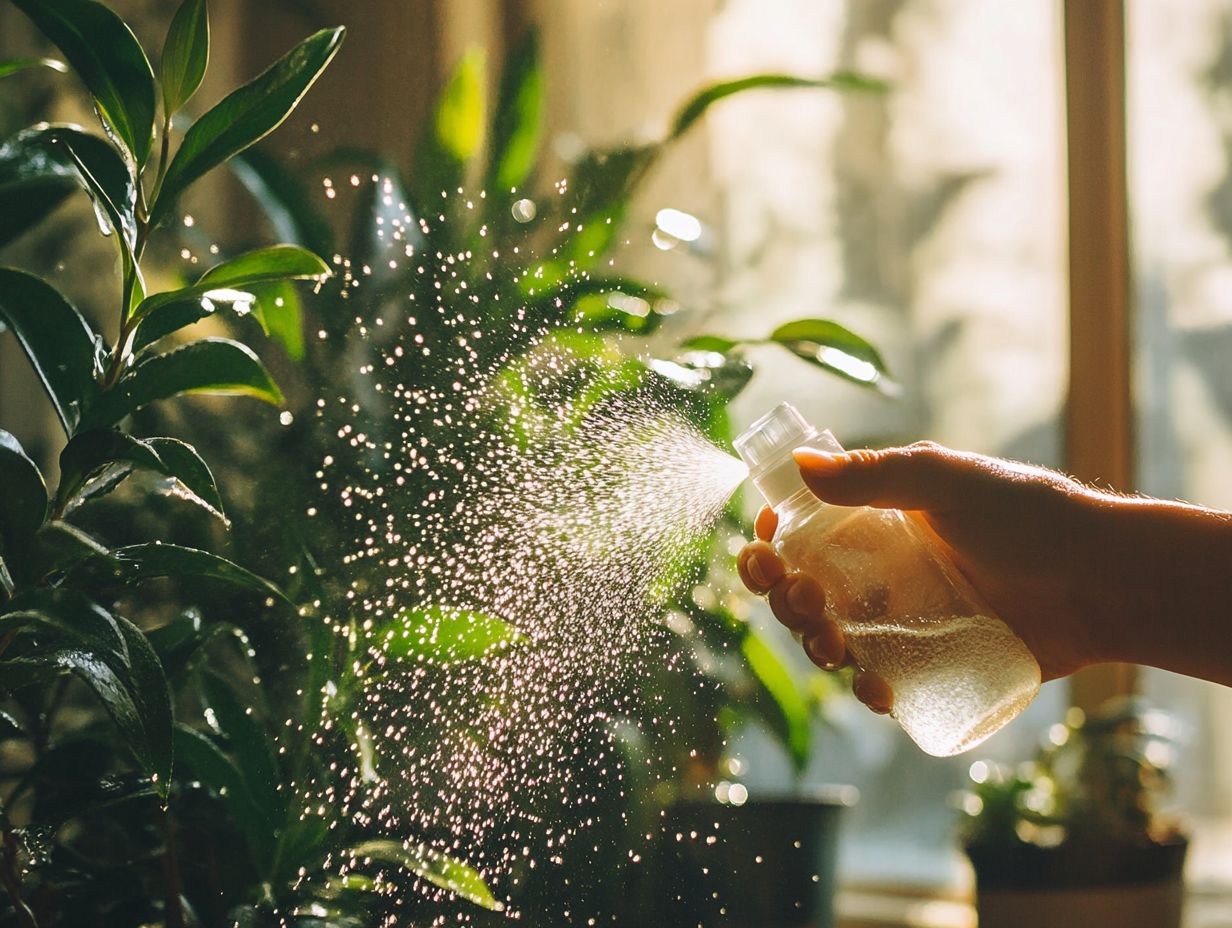
Implementing the right technique when using a sprayer for watering can significantly enhance how well water gets to your plants, ensuring they thrive beautifully.
To achieve optimal results, you’ll want to consider several key factors like the spraying angle, distance from the foliage, and the ideal time of day for application. Holding the sprayer at a 45-degree angle ensures even distribution and reduces the risk of oversaturating any single spot. For more insights on watering techniques, including watering vs. mist, keeping the nozzle 12 to 18 inches away from leaves promotes even coverage.
Morning or late afternoon typically offers the best conditions for watering, as cooler temperatures reduce evaporation and enable your plants to effectively absorb moisture.
Potential Drawbacks of Spray Bottle Watering
Using a spray bottle for watering can be quite beneficial, but it s vital to recognize the potential drawbacks and limitations that this method might pose for specific plants and gardening conditions.
For example, spray bottles may fall short when it comes to delivering sufficient moisture to deeper-rooted plants that demand a more substantial water supply. By recognizing these limitations, you can make informed decisions about your watering techniques and explore suitable alternatives when the situation calls for it.
Limitations and Alternatives
Recognizing the limitations of using a spray bottle for watering your plants is essential. Some plants need specific conditions that a sprayer cannot provide.
While a spray bottle can moisten the surface soil, it often struggles to deliver moisture to the deeper root zones. This can lead to inconsistent watering, leaving some areas dry and others too wet.
For healthier hydration, try alternatives like watering cans. They allow for direct and controlled water application.
Soaker hoses are another great option. They emit water slowly along the ground, ensuring moisture reaches the roots evenly.
Using these methods can significantly enhance plant health, especially for species with deeper root systems.
Frequently Asked Questions
Is using a spray bottle for watering an effective method?
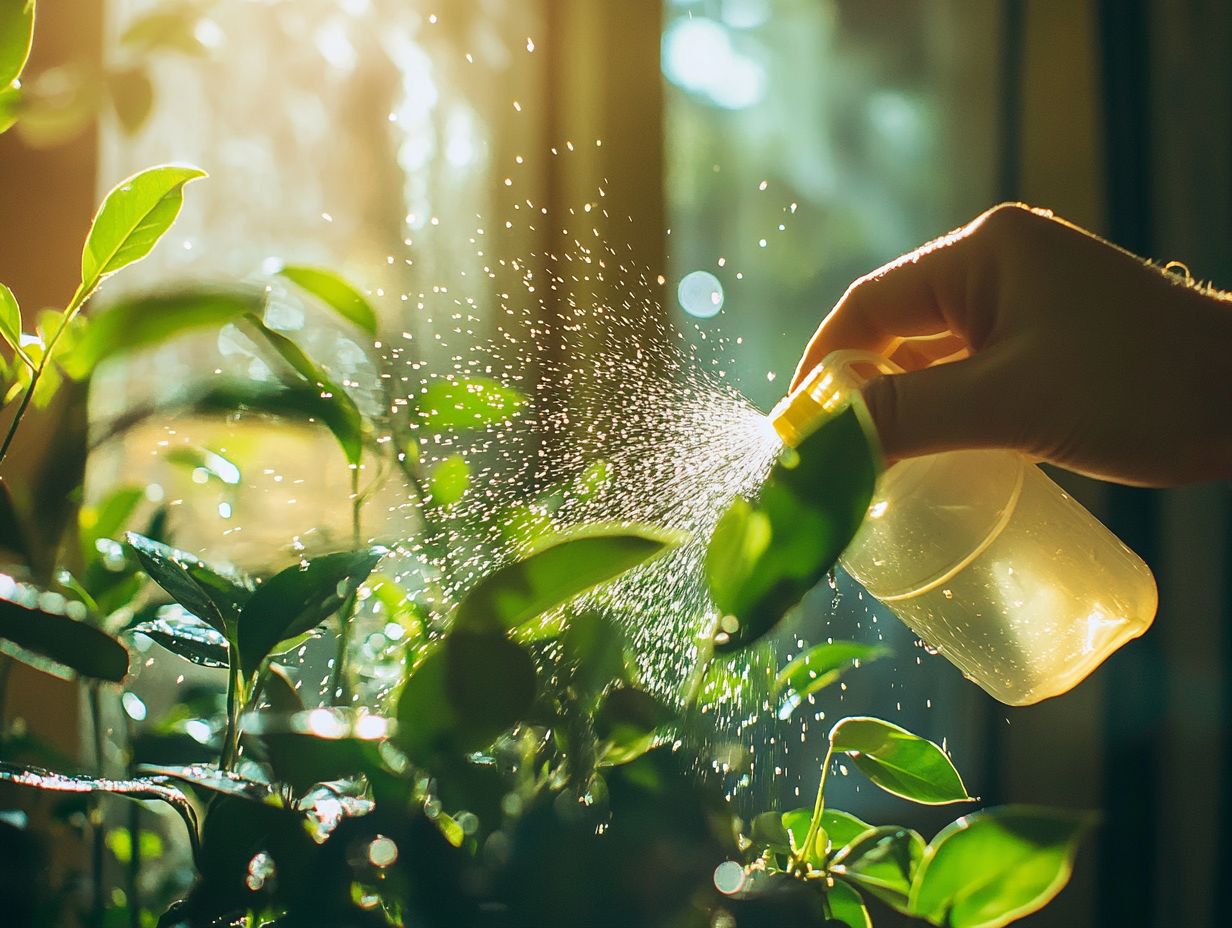
Yes! Using a spray bottle can be effective for small plants or for providing a light mist to delicate plants.
What types of plants are best suited for watering with a spray bottle?
Plants with fine or delicate leaves, such as ferns, orchids, and succulents, thrive best with a spray bottle.
Can a spray bottle be used for watering large plants?
While you can use a spray bottle for larger plants, it may take more time and be less effective than using a watering can or hose.
How often should I use a spray bottle for watering?
The frequency depends on the type of plant and its watering needs. Generally, misting every 2-3 days works for most plants.
What are the benefits of using a spray bottle for watering?
Using a spray bottle can help maintain proper soil moisture, promote healthy growth, and prevent overwatering, especially for roots and water molecules.
Are there any tips for using a spray bottle for watering?
Use room temperature or lukewarm water to avoid shocking plants, especially those with dense roots like mother-in-law’s tongue. Clean the spray bottle regularly to prevent clogs and bacteria buildup, ensuring the water remains suitable for everyday use.
Try these methods for happier plants! Explore more tips in our related articles.

